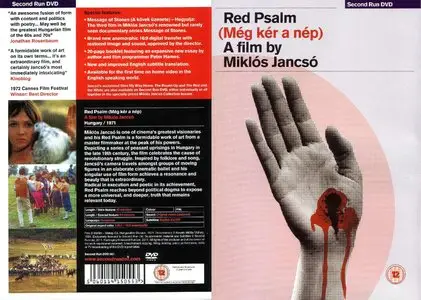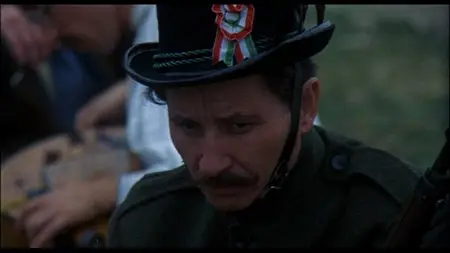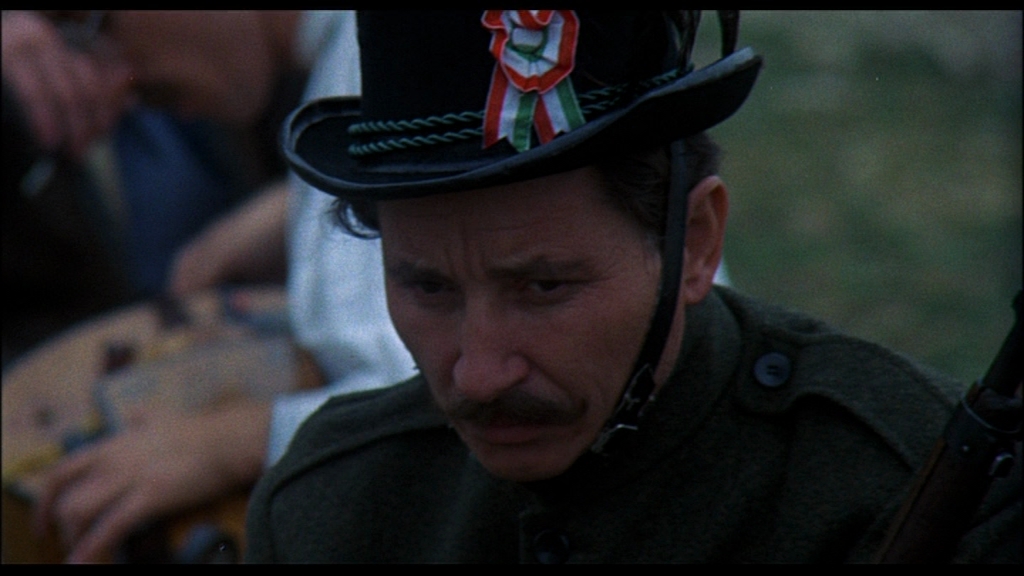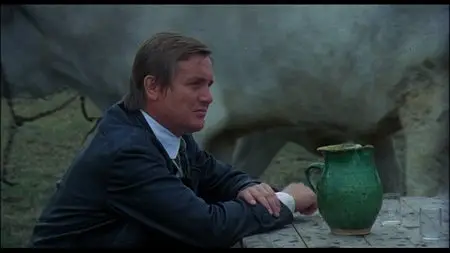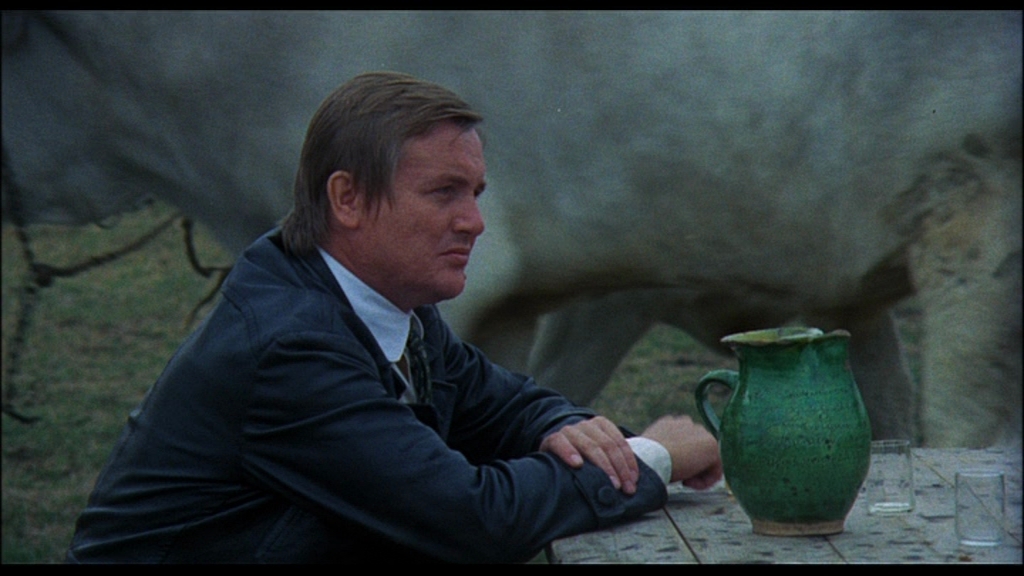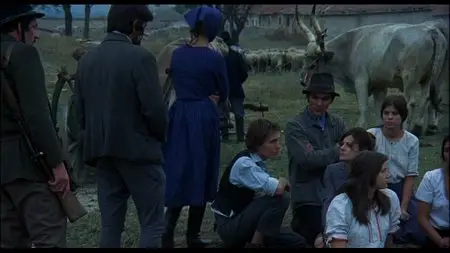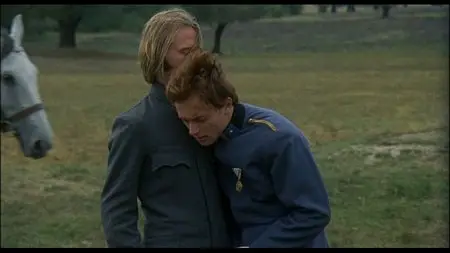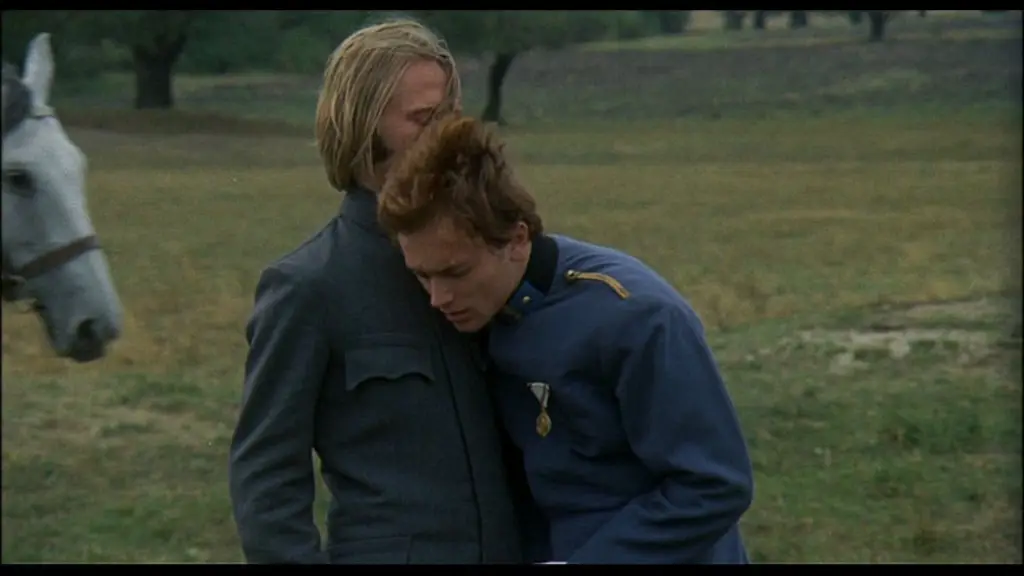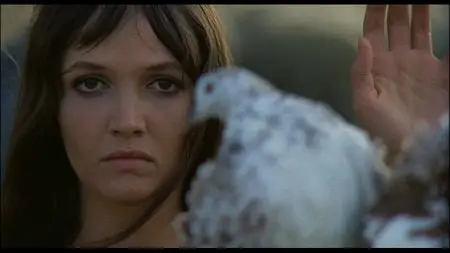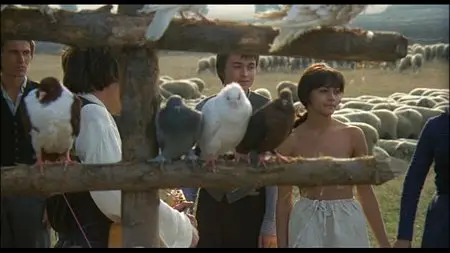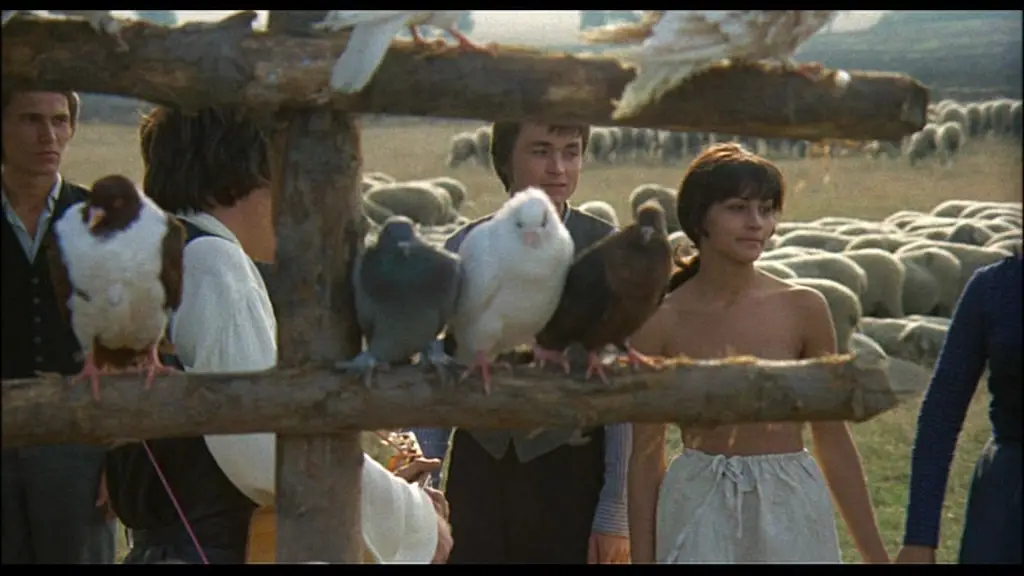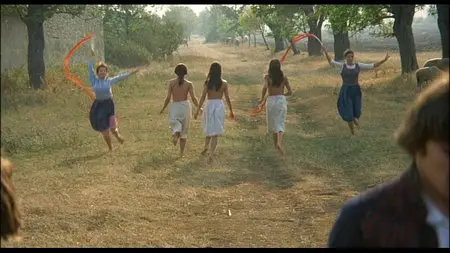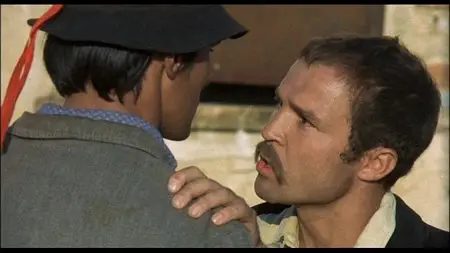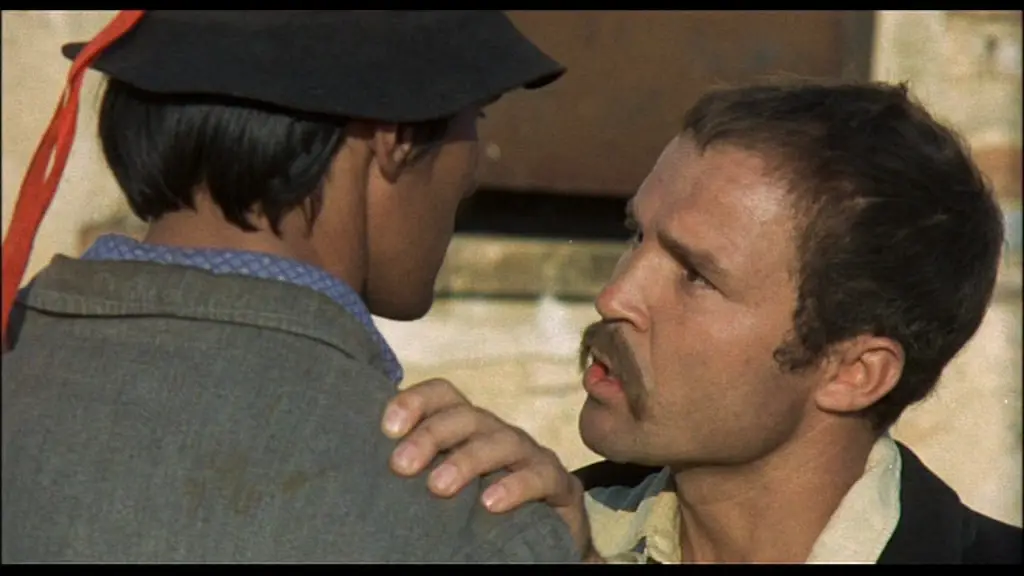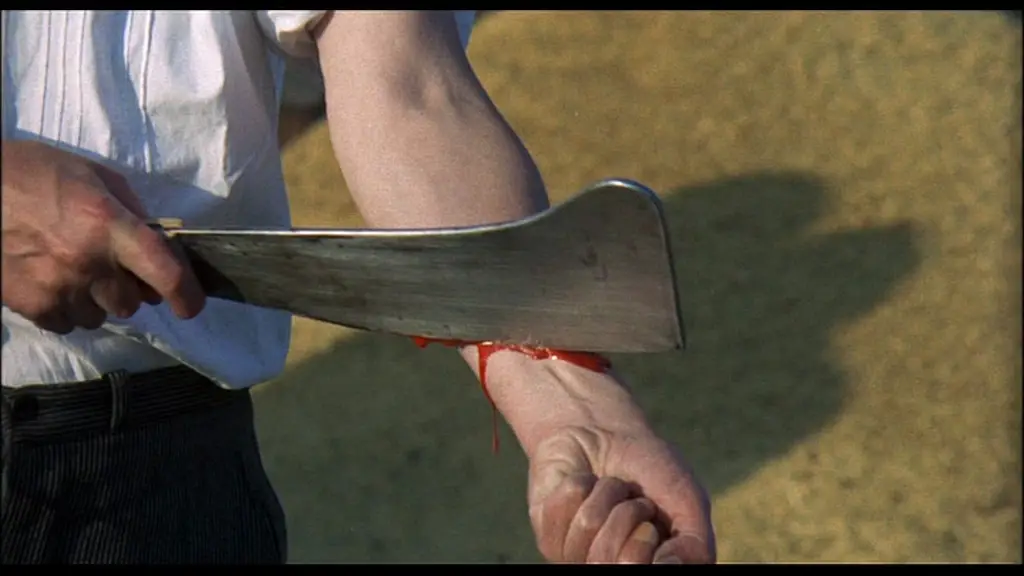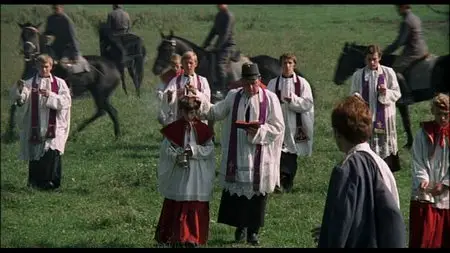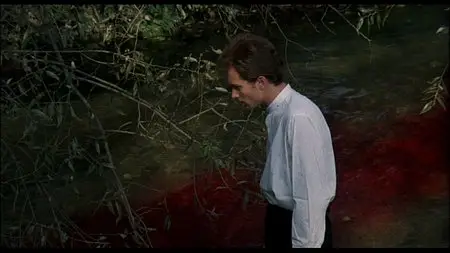Red Psalm / Még kér a nép (1972)
DVD9 | Video_TS | PAL 16:9 | Booklet | 01:21:53 | 6,06 Gb
Audio: Hungarian AC3 2.0 @ 256 Kbps | Subtitles: English
Genre: Drama, War | Hungary
DVD9 | Video_TS | PAL 16:9 | Booklet | 01:21:53 | 6,06 Gb
Audio: Hungarian AC3 2.0 @ 256 Kbps | Subtitles: English
Genre: Drama, War | Hungary
Miklós Jancsó is one of cinema's greatest visionaries and Red Psalm is a formidable work of art from a master filmmaker at the peak of his powers.
Depicting a series of peasant uprisings in Hungary in the late 19th century, the film celebrates the cause of revolutionary struggle. Inspired by folklore and song, Jancsó's camera travels amongst groups of moving figures in an elaborate cinematic ballet and his singular use of film form achieves a resonance and beauty that is extraordinary. Radical in execution and poetic in its achievement, Red Psalm reaches beyond political dogma to expose a more universal, and deeper, truth that remains relevant today.
IMDB
Second Run
DVDBeaver
All films are dialectic between cut and shot, edit and vision, duration and severance, but what kind of conversation they might have can be very different to the one we’re used to. Miklós Jancsó helped bring attention to the cinema of his narrative Hungary in the mid 1960s with eye-catching films that emphasised the shot over the edit, his drifting camera absorbing events without the traditional grammar of scene structures and narrative cues. Martin Scorsese’s rule about cinema being what’s in and out of the frame was never more true than in a work in which the frame’s capacity to move, rather than the capacity to move between frames, is celebrated. Red Psalm, which gained Jancsó a Best Director prize at Cannes, represented an extreme version of his efforts: consisting of only 26 separate shots, it drinks in physical context, unity of drama, and community action in a fashion that’s utterly radical and strange, and yet, in the way it plays out, hypnotically natural and fluid. Red Psalm never stops moving—it simply moves in a different fashion to most films.
Red Psalm, the original Hungarian title of which means “And the People Still Ask,” is often described as a musical, and there’s some truth to that, though not in the style the phrase usually suggests. In spite of the long takes, it’s not one of those passive-aggressive films full of intolerable static patches; rather it’s defined by constant, restless motion and activity. It’s a work that wouldn’t and didn’t upset Hungary’s Warsaw Pact government of the time, and yet it’s more than merely a hymn to official socialism past and present; it trafficks in the future, the what-might-be as well as the fait accompli, and to revolutionary traditions domestic and foreign. It’s no mere artistic grovel, but a morally engaged film that tries to articulate the vital moment when the powerless try to create a space in which they have power. Likewise, the English title draws out one aspect of the tapestry texture of the film: there’s an attempt to purify the corrupt, power-serving church and return to a grassroots sense of faith that’s inextricable from the earth and communal identity, a kind of paganised Christianity.
Detailing a fictional, but exemplary situation some time in the 1890s, Red Psalm portrays a collective of peasants attempting to resist all attempts by landowners, police, and finally, the military, to force them to sell their farm produce in the same way they always have, for a fixed (in both senses of the term) price to oligarchic landowners. When the film commences, the collective has already formed and made its declaration, and are waiting by a small chapel for the inevitable pressure that will come from the powers that be. The location is the agricultural flatlands, beautiful and spacious, ripe and giving. The peasants read a letter from Engels to the Hungarian socialists to bolster their stand, whilst haughty, bossy militiamen, cadets, and a bailiff gather to try to intimidate them: a quartet of young officers patronise them, asking it they understood Engels’ letter. The bailiff gives out drinks as a goodwill gesture, but the peasants pour it on the ground. The bailiff reiterates the usual payment in money and wheat for their produce, but one of the militiamen sets fire to the cash and the rest begin to walk away after being taunted by the peasant women, allowing the rest of the collective to grab the bailiff, stuff him in a sack, and drag him away. The peasants are barely differentiated by names or biographies, but some begin to emerge in individuality: one, Balint (József Madaras), maintains a conscientious and calm probity, whilst a woman in a blue dress and headscarf is the most forceful figurehead of the collective’s purpose.
The unifying motif is music, for a band of troubadours keep up a constant stream of tunes and anthems to fire the spirit of the collective and taunt the oppressors back. Jancsó pays sly tribute to Hollywood musicals in the bold costuming of the major female figures and, in places, the way the community interacts evokes images from the likes of Oklahoma!, The Band Wagon, and Seven Brides for Seven Brothers. The mood and method of this musical is, like those films, a blend of high style and naturalism, but essayed in an entirely different fashion. The tunes come entirely from the people on screen, played on location and engaged with in a realistic fashion, with people breaking into dance and song when they feel like it.
As the collective begins to swell in numbers, incorporating, it seems, all the folk from the nearest village, likewise the number of soldiers brought in to threaten them grows. One of the young officers, who has been ordered to kill the leadership of the collective, is instead intrigued, especially by a trio of young women who strip and continue to protest topless. He gives up his revolver to one of his fellow officers, who then casually lets off shots into the collective, wounding one woman in the arm, and then shooting dead his wayward fellow. But he revives when a peasant maid gives him a kiss, a fairytale inversion of the Sleeping Beauty plot. The wounded girl’s injury transforms from blood into a red ribbon. A count comes to speak to them with calm and friendly words, droning on about thriftiness and moral capital, and then rolls overt, stone-cold dead, sparking the outrage of his imperious wife.
It’s not just power and commerce that’s at stake here, but the power of resurrection and annihilation. The countess whips up the soldiers and her servants to herd the peasants into a huddling mass, whilst the priest from the chapel reads out cant. For a moment the collective is contained, but then some of the stronger labourers begin cracking whips, scaring the horses and the priest. Balint tries to restrain assaults on the church, gaining him the disapproval of his fellows: they, listening to the priest’s righteous recital of a letter from the Pope filled with bigotry (“Here are heretics, pagans, Jews, and other denominations, but you my flock did not turn against the guilty, but against the whole of society.”) bundle him away and set his chapel on fire. They then hold a candlelight mass where they pray for such things as “Protect us from widowhood…protect us from immigration…Save us O Lord from starvation…Save us O Lord from the holes in our boots…”
Yet Jancsó also acknowledges the deep roots of faith in the soil and the labours of humans, as his camera passes from a young woman ringing bells for mass to others carrying religious paraphernalia onto a table loaded with the bounty and sustenance of the peasants’ labour, including a loaf of bread that one of the women carries as if it were a holy talisman. Jancsó, whilst playing games with the movie musical tradition, also channels the nature imagery of specific forebears in the Eastern bloc film tradition—Dovzhenko and Paradjanov—but unlike the latter filmmaker, he doesn’t mystify even whilst evoking mysticism. Later, when disavowing use of weapons and the implements of violence, one of the men quotes the Book of Isaiah about beating swords into ploughshares. The line between Christian sacrament and pagan fertility ritual all but disappears as the film progresses. An old man listens with apparent joy to the words of the group, but then cuts his wrist and bleeds to death, and Balint covers him with his shirt: why is an absolute mystery, unless it’s to not have to live past the moment of perfect joy he’s found. One of the militiamen, Janos Nagy (Márk Zala), is inducted into the peasants’ number with a ritualistic fervor as women touch his head with branches as he disowns his evil acts.
Whilst Jancsó pays overt tribute to the social struggles of Hungary—referenced several times in the film are the words of poet Sándor Petőfi, who was executed for involvement in the nationalist uprisings of 1848, the events of which the story evokes—he also encompasses references to the French Revolution, as the group sings their rewritten version of “La Marseillaise,” as well as American labour and social struggles, when the collective’s band plays “Charlie Is My Darling,” a Civil War-era song. It’s very hard, in spite of the historical setting, to avoid thinking of ’60s counterculture protests, especially the 1967 march on the Pentagon, when the young women bare their breasts and advance fearlessly on the soldiers who are momentarily sparked to excitable desertion, running away in a cheering mass after chasing the girls to get an eyeful. Flower power is often on display, and more codified images of spiritual and physical fecundity, too, as when the young women hold fowl to their bosoms and the villagers circle in unified labour to stamp the chaff out of wheat. The whole landscape is charged with richness and also tension, for even the most joyous moments for the collective usually have the ever-massing, encircling soldiers waiting in grey lines around their own ranks. The swaggering CO of a new detachment of troops explicitly mocks the collective as “cowards hiding behind infants,” and a steam train loaded with soldiers noses its way into the hitherto preindustrial landscape. But increasingly large numbers of the soldiers are joining the collective, too.
Finally, the expanded insurrection meets in a huge celebratory mass around a maypole. For a moment, all the soldiers join their celebration, but most are then scared back into formation by their officers and end up gunning down the group. The victorious oligarchs drink a toast, and the young, resurrected officer descends into a river dyed red with the blood of the slaughtered community. The soldiers are blessed by the priest, and the original core members of the collective are lined up to be shot together. One of the troubadours stabs the bailiff in the stomach and defies the bullets of the young officers, which bring him down only slowly as he struggles to finish his song. The remaining members of the group are executed, the nudity of the young women now seeming less redolent of hippie chick freedom than of the nakedness of the gas chamber’s victims. But the woman in the blue dress, now dressed in a red contemporary fashion, pulls a soldier from his saddle, takes his revolver, and begins gunning down the rest of the army, until they’re all sprawled as dead as her comrades.
Jancsó’s success in synthesising a cinematic style that is at once utterly down to earth and unified in both the technical and aesthetic senses, realistic, without a special effect or the fan dance of regular editing styles, and yet highly surreal and charged with magic and possibility, is undeniable. Many directors have attempted in recent years to pepper their films with extended tracking shots with varying degrees of stylistic and thematic intent and success, but they are mostly just showing off. For Jancsó, it’s the best way to describe the world he’s envisioning, one of harmony and structure, group struggle and the endurance of idealism. His film, rather than a film of a dance, is a dance itself.
Special Features:
- Message of Stones (A kövek üzenete) – Hegyalja: The third film in Miklós Jancsó's renowned but rarely seen documentary series Message of Stones.
- Brand new anamorphic 16:9 digital transfer with restored image and sound, approved by the director.
- New and improved English subtitle translation.
- 20-page booklet featuring an expansive new essay by author and film programmer Peter Hames.
- Optimal quality dual-layer disc.
- Available for the first time on DVD in the English speaking world.
Many Thanks to PSiF.
No More Mirrors.


